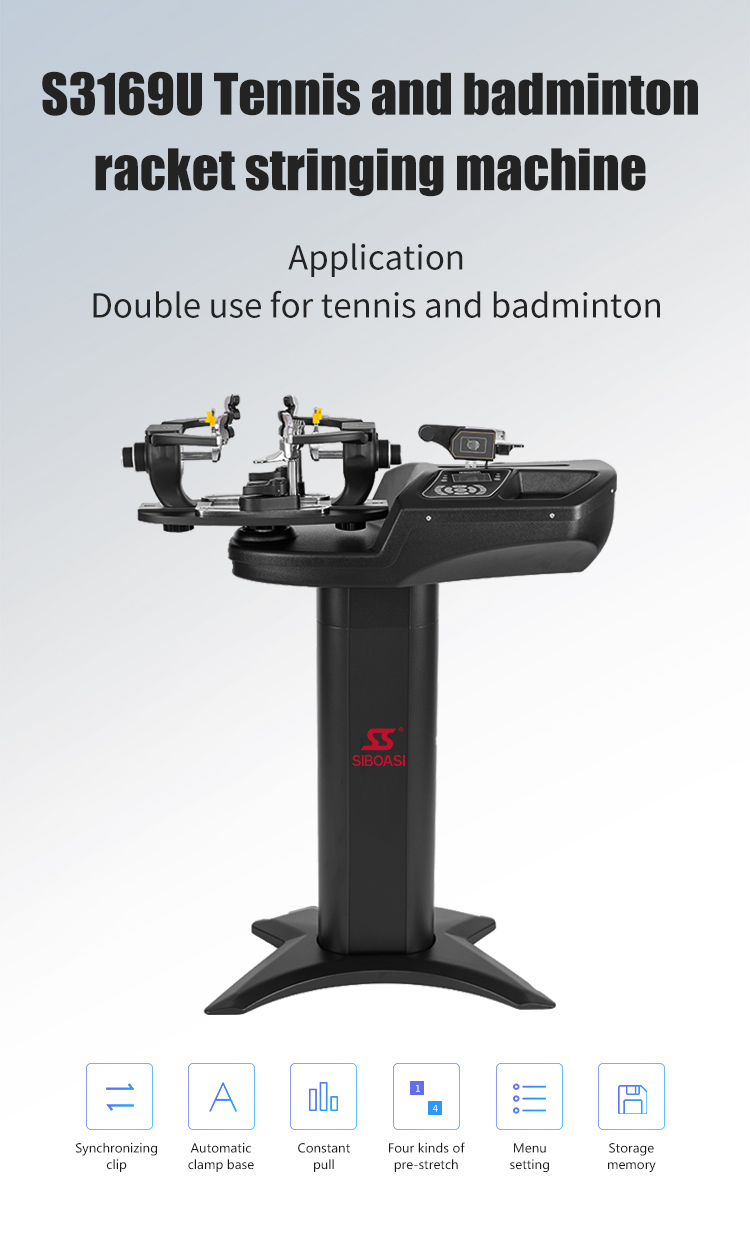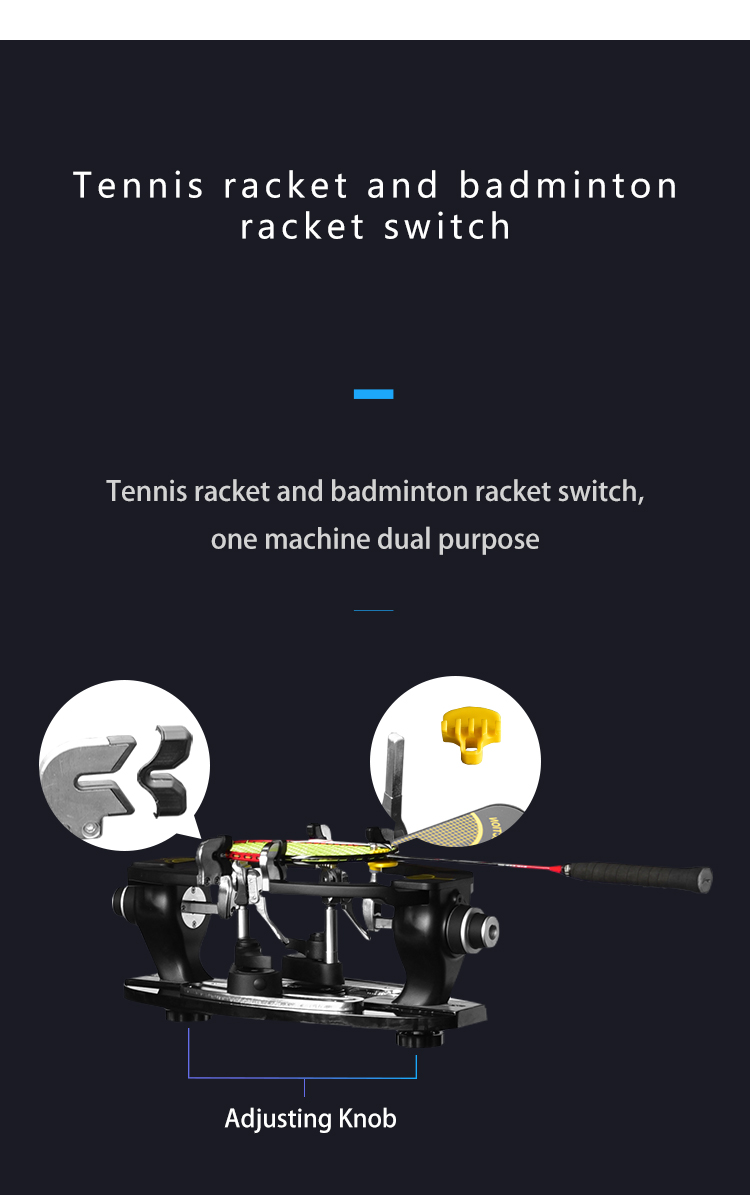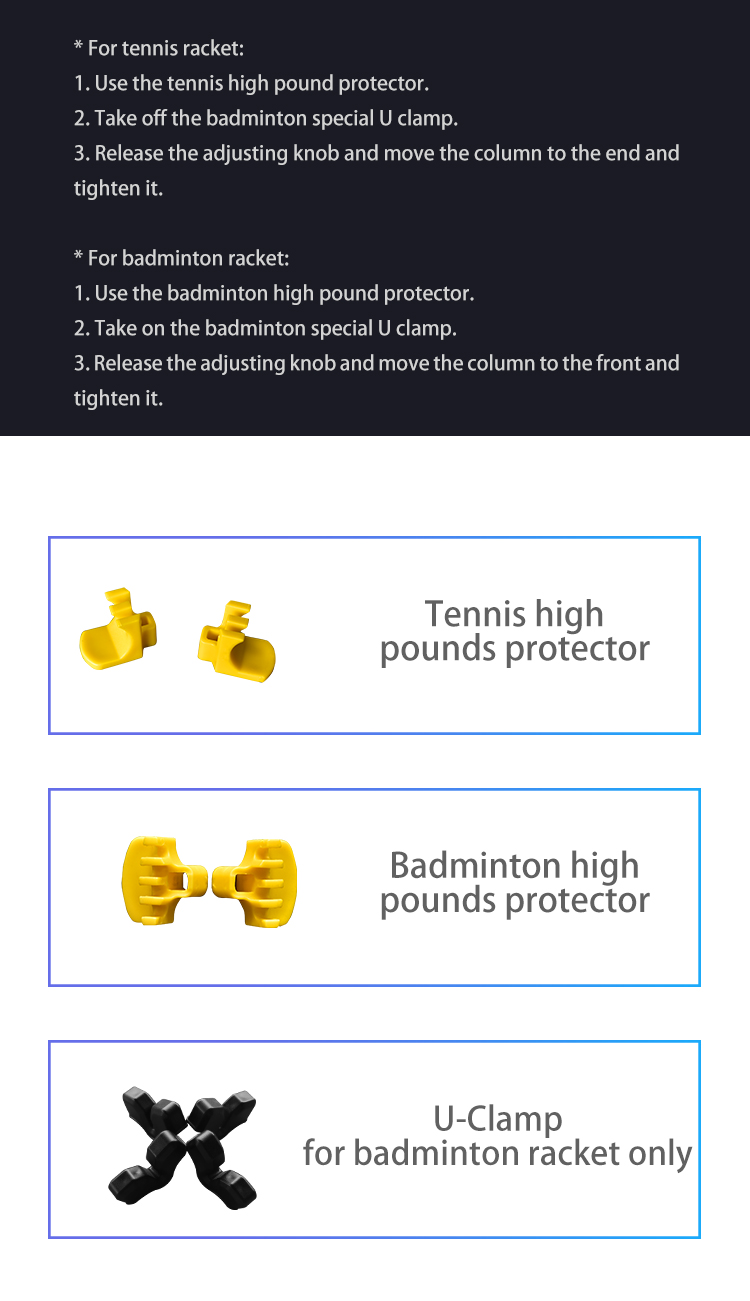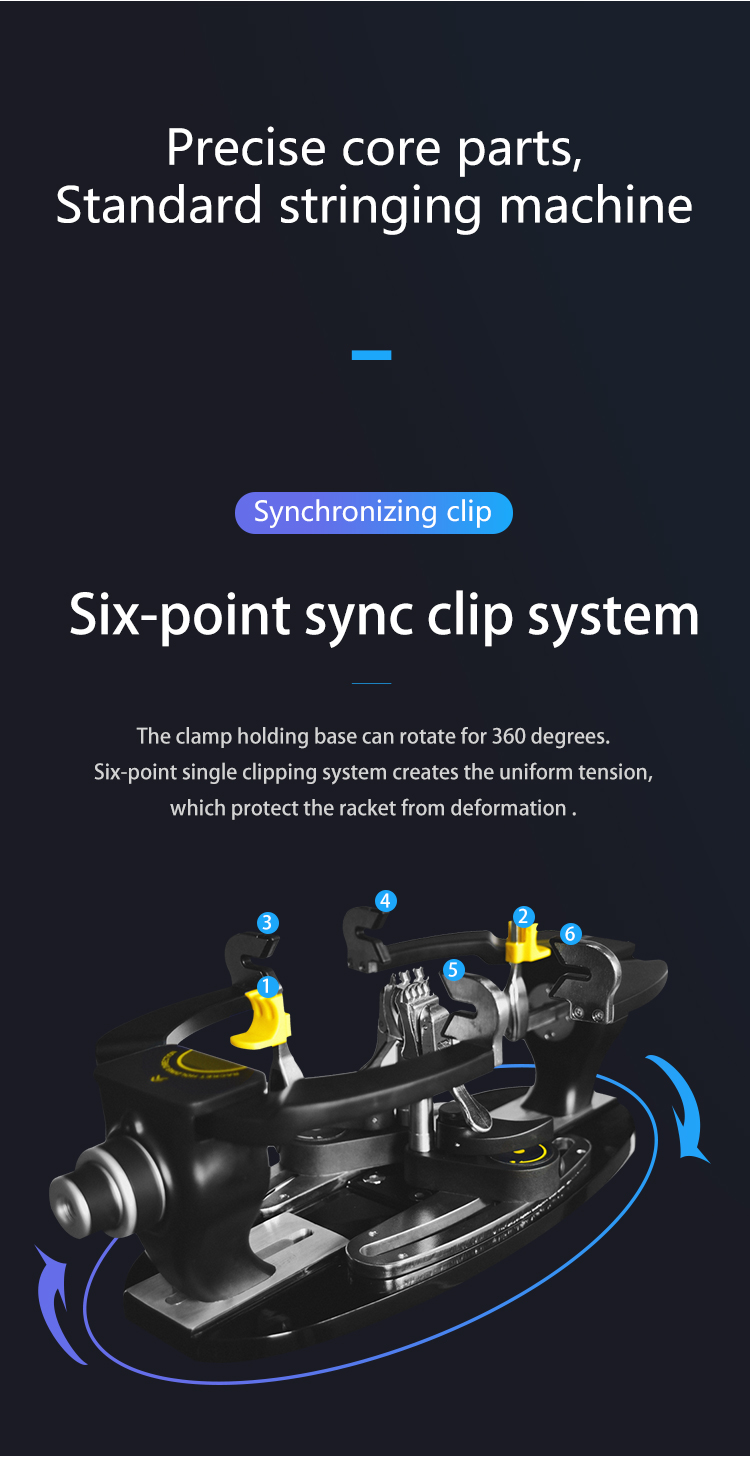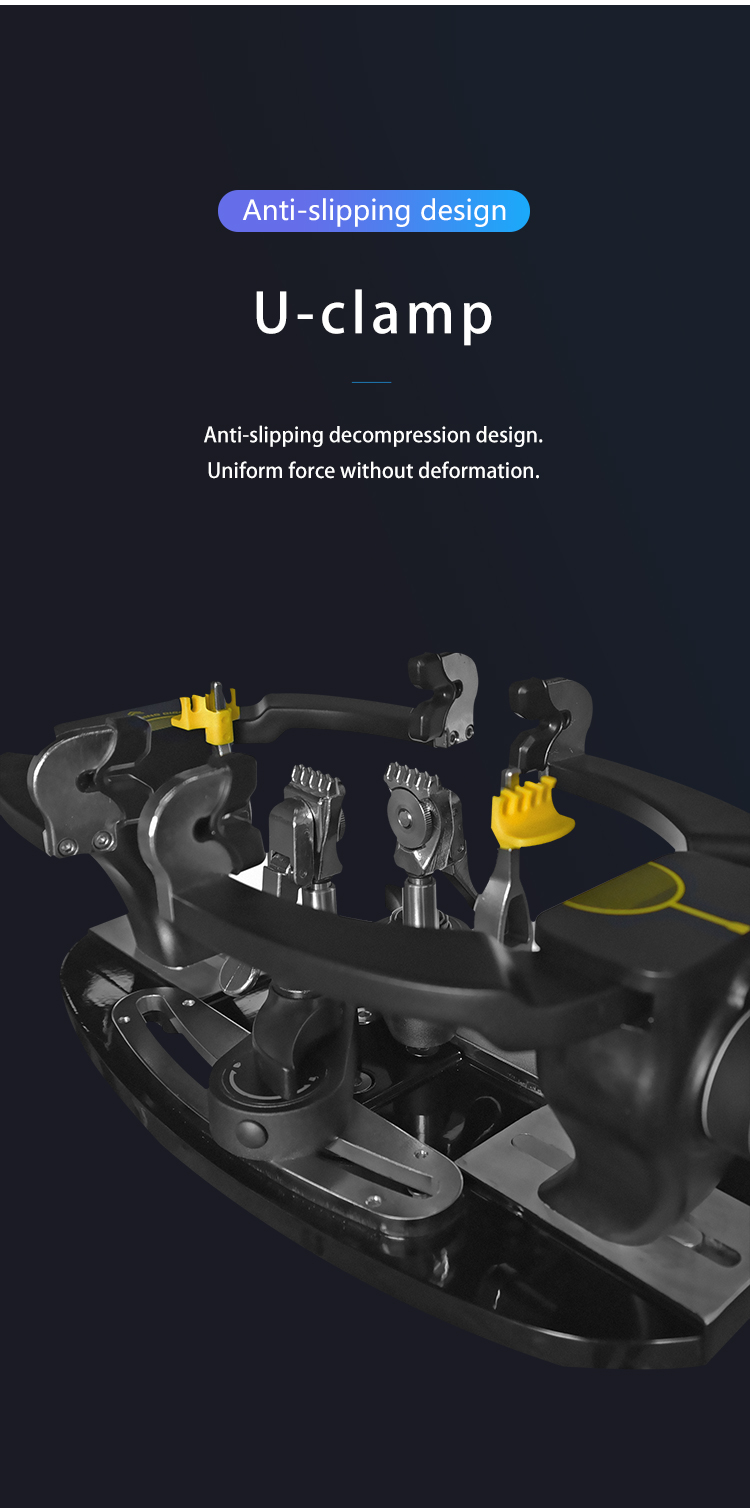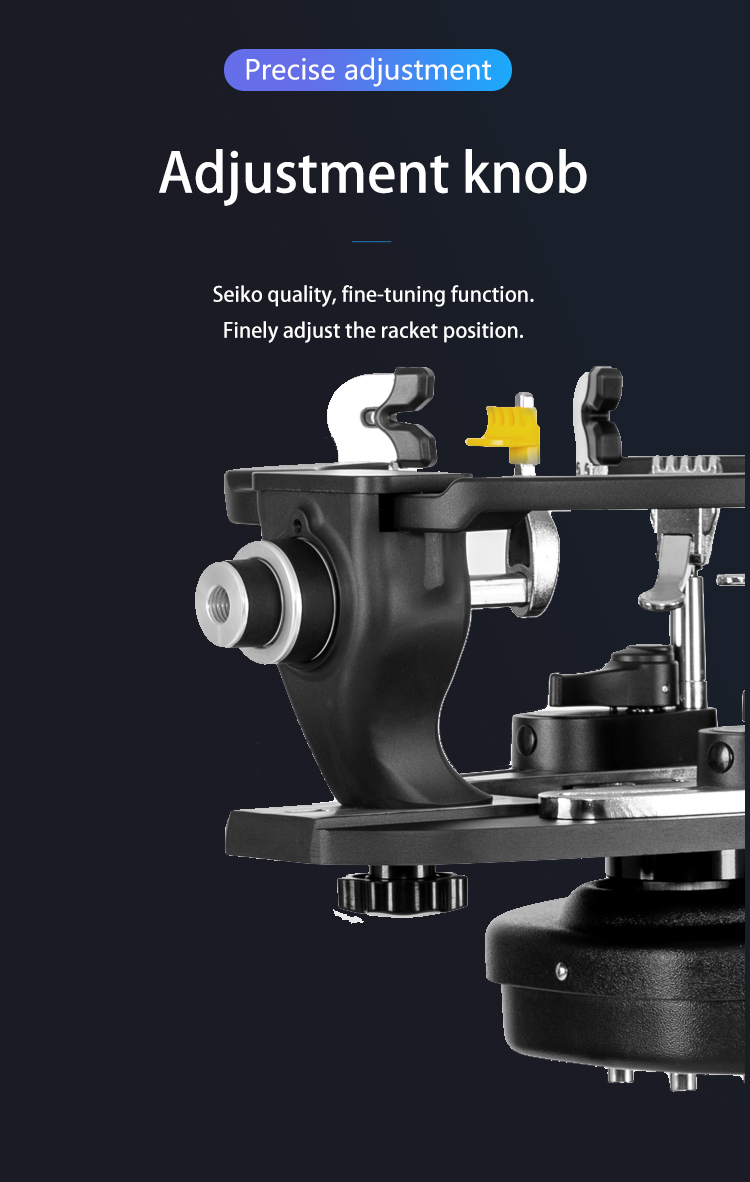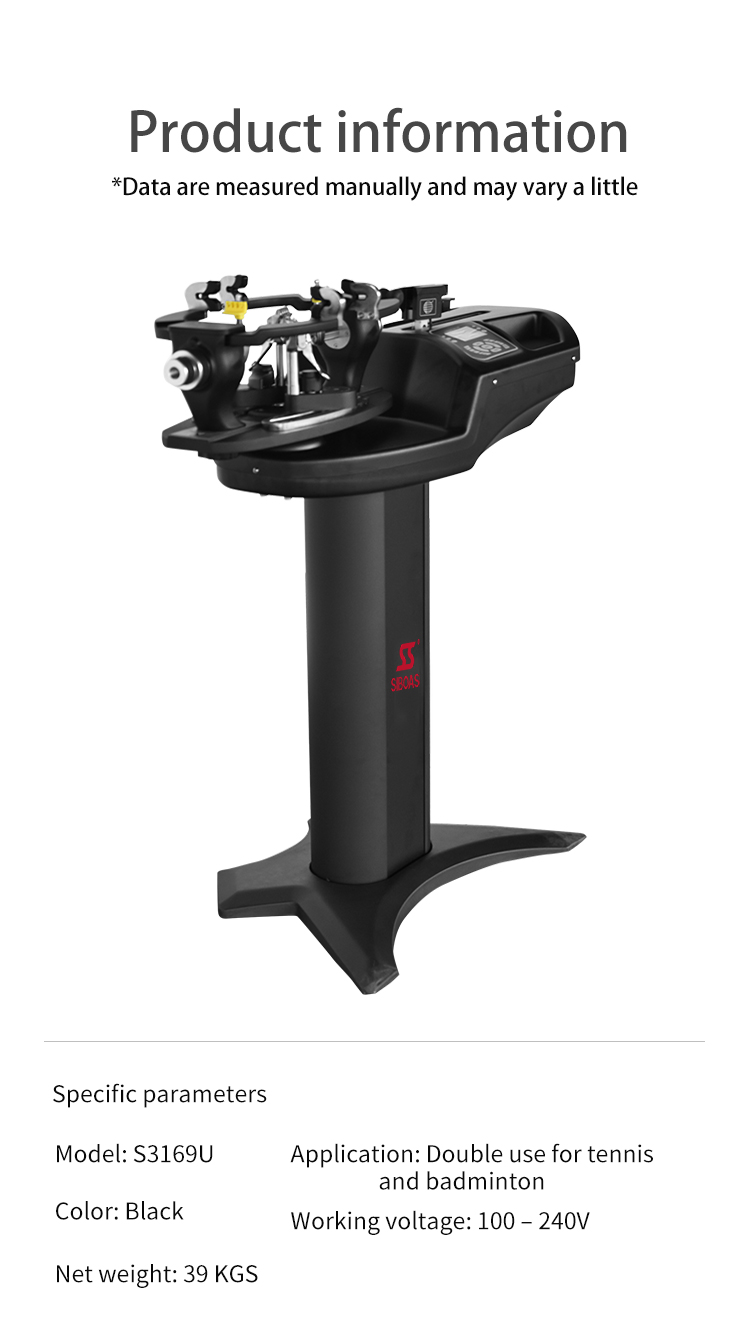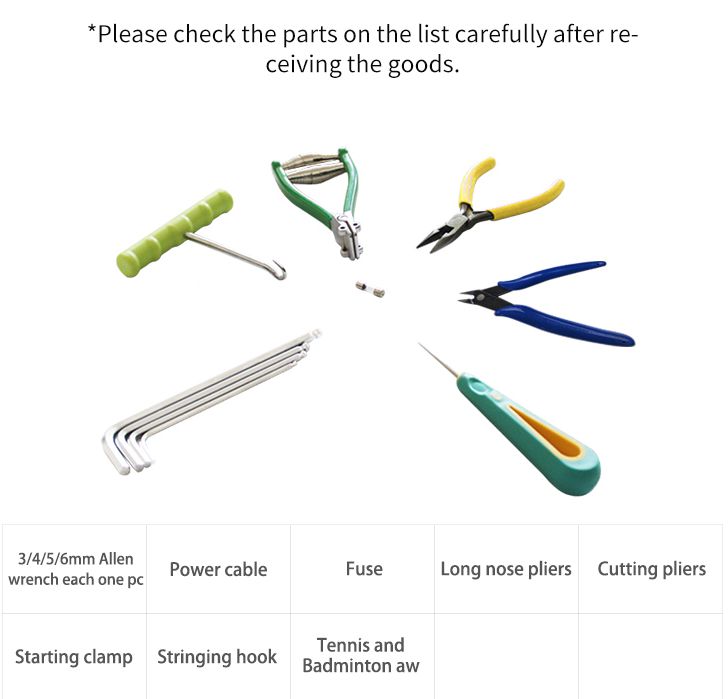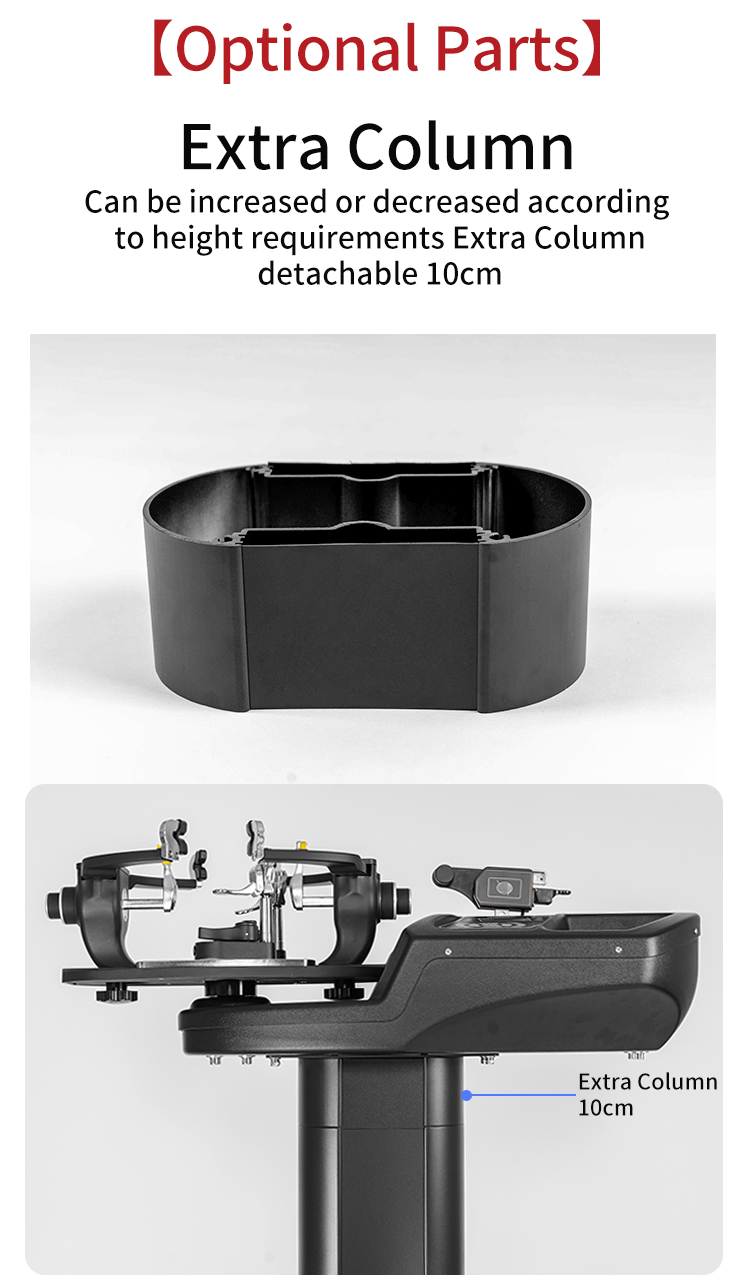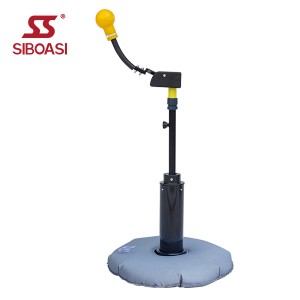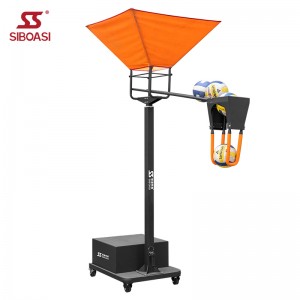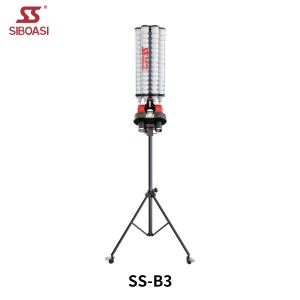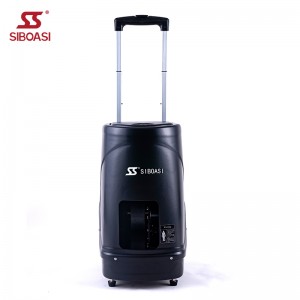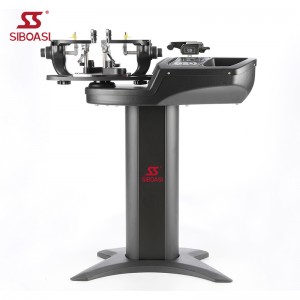SIBOASI badminton tennis racket stringing machine S6
Product Highlights:

1.Stable constant pull function, power-on self-checking, automatic fault detection function;
2. Storage memory function, four groups of pounds can be arbitrarily set for storage;
3. Set up four sets of pre-stretching functions to reduce damage to the strings;
4. Memory function of pulling times and setting of three-speed pulling speed;
5. Knotting and pounds increasing setting, automatic reset after knotting and stringing;
6. Three-level setting function of button sound;
7. KG/LB conversion function;
8. Synchronous racket clamping system, six-point positioning, more uniform force on the racket.
9.Automatic work-plate locking system
10.Extra column with 10cm height optional for different height people
Product Parameters:
| Voltage | AC 100-240V |
| Power | 50W |
| Suitable for | Badminton and tennis rackets |
| Net weight | 55KG |
| Size | 48x106x109cm |
| Colour | Black&Red |

Comparison table of SIBOASI badminton tennis racket stringing machine

How to learn to string a racket using a stringing machine?
Learning to string a racquet with a stringing machine can take some practice, but here are the basic steps to get started:
Get the necessary equipment ready: you'll need a stringing machine, racquet string, stringing tools (such as pliers and awl), clips, and scissors.
Prep the racket: Use a cutting tool to remove the old strings from the racket. Be careful not to damage the frame or grommets. Mount the racquet to the machine: Place the racquet on the stringing machine's mounting post or clamp. Make sure it's safe and stable.
Connect the power supply: start with the power supply (vertical string). Thread the string through the starting clip, guide it through the appropriate grommet hole on the racquet frame, and lock it to the appropriate tensioner or tensioning head.
Stringing the cross: Once powered on, the cross (horizontal string) can be strung. Thread in and out of the appropriate grommet holes following the same process as for the power supply.
Maintain Proper Tension: As you thread each string, adjust the tensioner or tension head according to your desired string tension to ensure proper tension.
Securing the strings: After the main and bar strings are pulled, use clips to maintain tension on the strings. Remove any slack and tighten the clip securely.
Knot and cut the rope: Once all the ropes are strung, tie the last rope off by tying a knot or using a rope clip. Use sharp scissors or scissors to trim excess string.
Check and adjust tension: After threading, check the tension of each string with a tension gauge and adjust if necessary.
Remove racket from machine: Carefully release clip and remove racket from stringing machine. Remember, practice is key when learning to string a racquet with a machine. Start with simple string patterns and work your way up to more complex patterns as you gain experience. Also, refer to your threading machine manual for specific instructions and safety guidelines for your particular machine.
